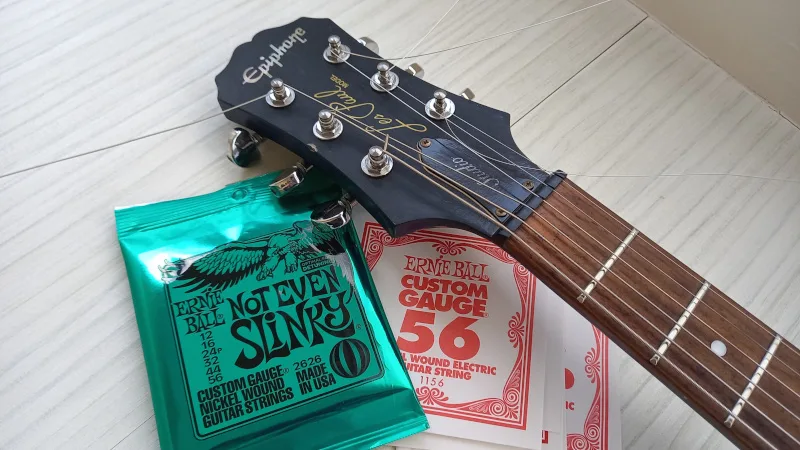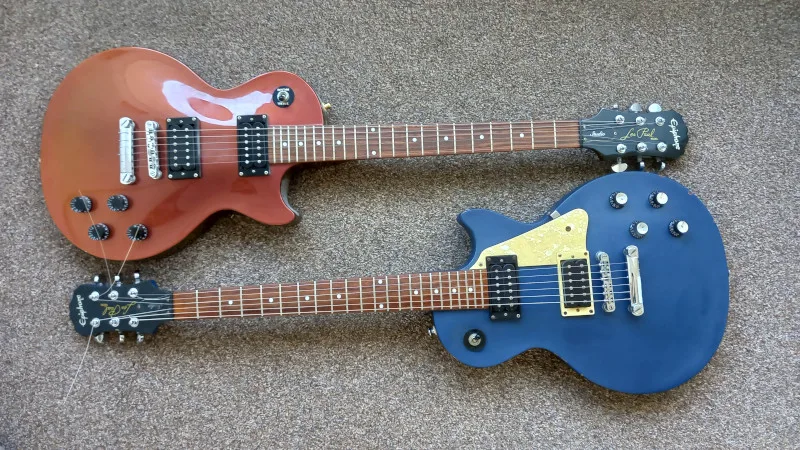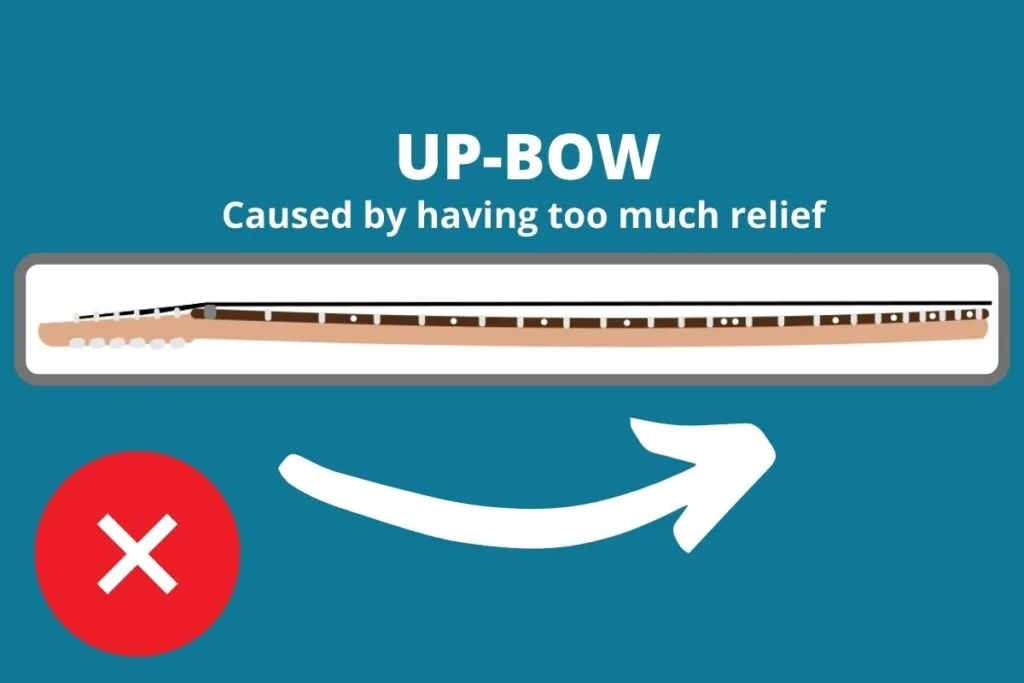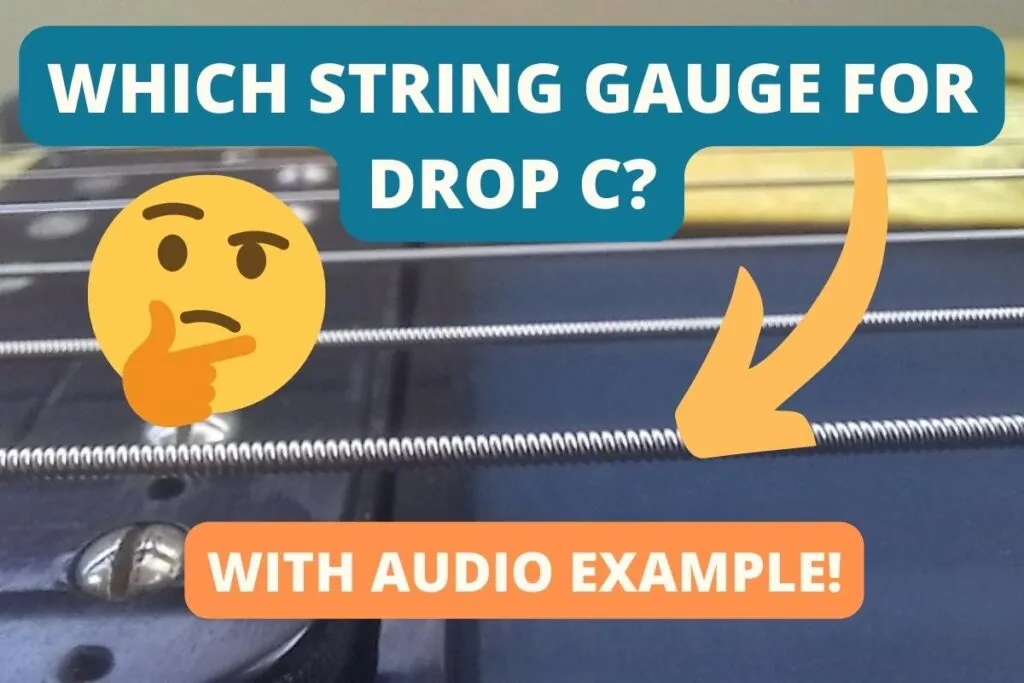At some point, every hard rock or metal fan wants to tune down their guitar to get that iconic “chugging” sound of drop C tuning. If you’ve ever tried to do this with regular gauge strings, you’ll know that this usually ends with disappointment. Why? Because you’re using the wrong string gauge!
So, what’s the correct string gauge for drop C?
You should use a string gauge of 12-56 for drop C tuning. Tuning your guitar to CGCFAD requires a higher string tension to manage the lower pitch. Tuning your guitar to drop C with lighter gauge strings will be less likely to stay in tune, sound thinner, and may cause fret buzz.
Great, but that’s only one piece of the puzzle. Changing your string gauge and tuning can affect both the tone and playability of your guitar if not done properly.
I’ve put this guide together to show you why you need a higher string gauge and explain how to set up your guitar for your drop C tuning to prevent fret buzz and give you the thunderous tone that your chugs deserve!
Gauging it right
If you’ve ever used standard guitar strings (10-46 gauge) for drop C tuning, you’ll know that it really doesn’t sound good. Instead of chugging out System of a Down’s “Chop Suey!”, you end up with strings like loose spaghetti that don’t have enough energy in the bass tone.
But why does it sound so bad? It’s all to do with string tension.
String tension is a measure of how tight your guitar strings are between the tuning pegs and the bridge and is affected by your string gauge and tuning pitch.
When you change your tuning pitch down, your string tension drops, which makes your strings loose, rattly, and sometimes unplayable.
To remedy this, you need a guitar string that has higher amount of string tension, which means that you need a guitar string with a higher string gauge.
String gauge is a measure of a guitar strings thickness. The higher the gauge, the thicker the string. And the thicker the string, the greater the string tension.
Higher gauge strings also have the added benefit of having more bass tones, meaning that riffs will sound more punchy and stand out better in a mix.
So, for low guitar tunings such as drop C, I use guitar strings with a gauge of 12-56. I use the Ernie Ball “Not Even Slinky” strings.

Putting it to the test
I recorded the clips below to show the difference between how drop C tuning sounds using 12-56 gauge strings and 10-46 gauge strings, using 2 Epiphone Les Paul Studio’s through the same amp simulator.

Here’s the 12-52 gauge strings playing a riff in drop C tuning:
And here’s the 10-46 gauge strings playing the same riff:
You can hear that the guitar with the higher gauge strings has much more bass, which acts as a driving force behind the riff.
The lighter gauge strings don’t sound bad, but they’re much less punchy. Also, they were a lot harder to keep in tune!
In terms of playing both guitars, the guitar with the higher gauge strings was much easier to play as the strings had less movement. By having tighter strings, my picking hand didn’t have to move as much, which made it easier to “chug” on the lower strings for longer!
New string gauge, new problems
So, right now you might be thinking “Great, I’ll put on some new strings and my problems will be solved!”. Well, it’s not quite that simple.
Changing both your string gauge and your tuning pitch can have different effects on your guitar that might cause new problems that can affect playability.
The increased tension from the higher string gauge may cause your guitar’s headstock to be pulled closer to the bridge. This increases the “relief” of the neck and creates “up-bow” which can cause fret buzzing.

Likewise, the thicker strings may be more likely to “catch” against your frets when they’re vibrating. This can also create fret buzz.
Luckily, both these problems quite simple to fix!
I made a guide on how to fix fret buzz that I’d recommend following once you’ve put on your new strings to get a clear, buzz free tone for your chugs!


Conor is a music producer, multi-instrumentalist, and all-round enthusiast from the UK with over 15 years of experience. He’s the founder and sole-content creator for the roundtable audio blog and YouTube channel.
